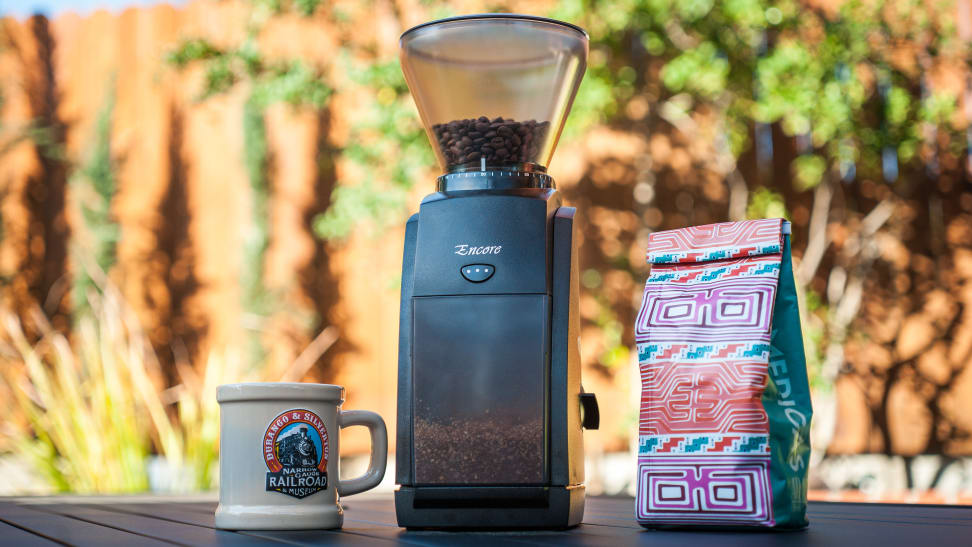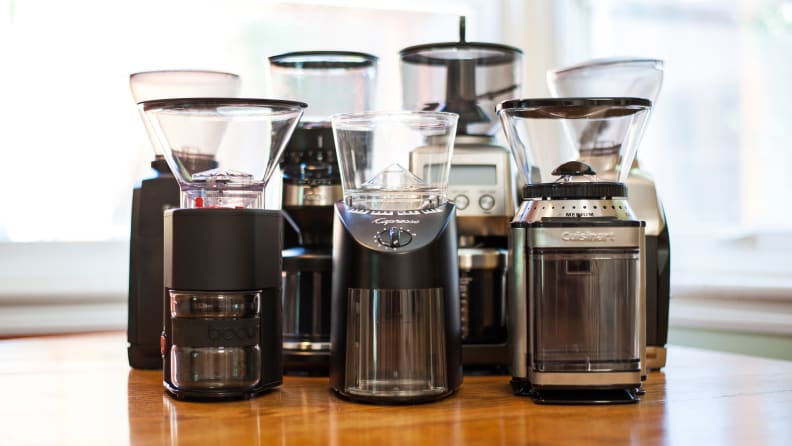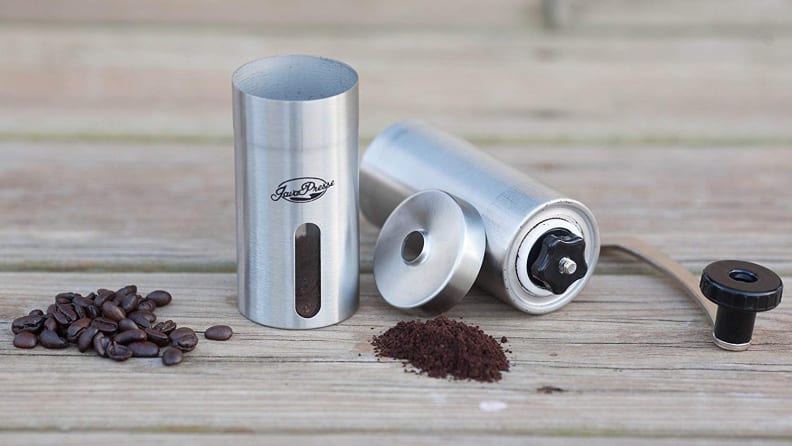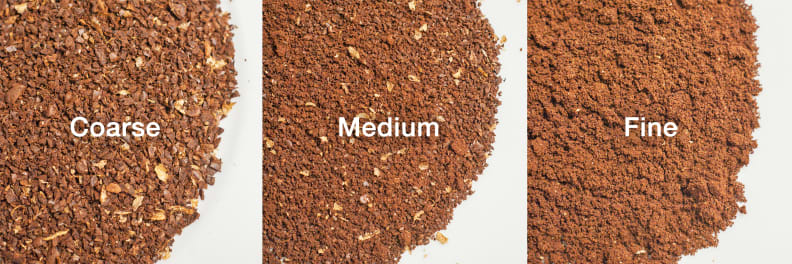 Credit:
Reviewed / Ben Keough
Credit:
Reviewed / Ben Keough
Products are chosen independently by our editors. Purchases made through our links may earn us a commission.
Even if you own an arsenal of professional coffee makers and only use the freshest beans, there’s still a chance your coffee isn’t turning out as smooth and flavorful as you’d like.
When I dove into the world of coffee products, I soon learned an industry secret—the key to a cup of delicious coffee is actually the grinder, regardless of the brewing method. Investing in a well-built grinder and grinding your own beans can be the difference between an adequate cup and the perfect cup.
Do you really need to grind your own coffee?
Making the most flavorful, full-bodied coffee is all about freshness and consistency, which means you’ll need to grind the roasted beans yourself right before making a cup of coffee. Just like every perishable item in your fridge, coffee grounds have a limited lifespan—as soon they're exposed to air, they become subject to oxidization.
While a vacuum-sealed bag of beans can last up to nine months, fresh grounds are only really "fresh" for one to two hours. To ensure your home brewing experience is worth the money you’ve already spent on the best coffee gadgets and beans, add a a top-rated grinder to your repertoire. The best grinders can produce uniform, consistent coffee grounds within seconds.
A solid grinder can evenly break down each bean, allowing the right amount of oils and flavors to be extracted at the right temperature for the right amount of time. To perfect your cup, you’ll also need to adjust the size of the grounds with different brewing methods—more on that later.
Blade vs. Burr: Which one should you buy?

Choosing the right coffee grinder is the first step to a successful cup of coffee.
There are two main types of coffee grinders: blade grinders and burr grinders. A conical burr grinder, like the Baratza Encore, pulverizes the roasted beans between two serrated moving steel plates, a handful of beans at a time. This mechanism allows a more consistent, even grind, but it will cost you a lot more than a simple blade grinder.
The more affordable option is the blade grinder, which chops up the beans with spinning blades. This can cause the grounds to vary in size and shape, which is a problem as the grounds will extract at different rates. Blade grinders also introduce heat to the coffee grounds, which destroys some of the flavor and adds a “burnt” taste to the coffee.
While we don't recommend them, blade grinders are most suitable for espresso or drip coffee that requires extremely fine grounds. For French press and pour-over coffee makers that work best with medium to coarse grounds, a burr grinder will yield better results, as you can adjust the size of the grounds by changing the distance between the two steel plates.
Because coffee grounds extract oils and flavors at different rates, uneven grounds can lead to under- or over-extracted coffee. An even grind promotes even extraction, which results in a smoother, cleaner-tasting cup of coffee, which is why burr coffee grinder is exclusively recommended by coffee experts. When the grounds are over-extracted, the coffee will turn bitter.
Although we don’t recommend getting a blade grinder if you want the control over the size of the grounds, there are ways to get around this disadvantage. Instead of grinding in one go, you can let it pulse in two-second intervals in order to achieve relatively uniform grounds.

Manual coffee grinders are portable and compact.
If you want to take your coffee brewing habit outdoors, you should consider a manual burr grinder. We also recommend a manual grinder if you're up earlier than the rest of your house, as an electric grinder may wake up anyone within earshot. It’s a compact device that you can easily slide into your backpack or store in your kitchen drawer.
How finely ground should your coffee be?

The ground size can affect the coffee taste.
Due to the differences in temperature, pressure, and extracting method, different brewing methods may require the coffee grounds to be at various degrees of fineness. Take French press, for example—it makes the best coffee when the fresh coffee grounds are coarse. Because the coffee sits in the water for a long time, a rough grind can reduce the likelihood of coffee turning too bitter. The coarse grounds also help release carbon dioxide, which enhances the flavors in the coffee.
To help you navigate, here’s a list of desired grind sizes for the most popular brewing methods:
-
Very fine: Turkish coffee, espresso
- Fine: Moka pot, auto-drip
- Medium: Pour-over, Aeropress, drip coffee
- Coarse: French press, cold brew, percolator, plunger pot
No matter how evenly ground the coffee is, there are still moving parts in coffee brewing that require skills, patience, and learning. Whether you’re looking for tricks to make the most out of your Keurig machine or you’re curious about what our favorite cold brew makers are, at Reviewed, we’ve done the research for you.
